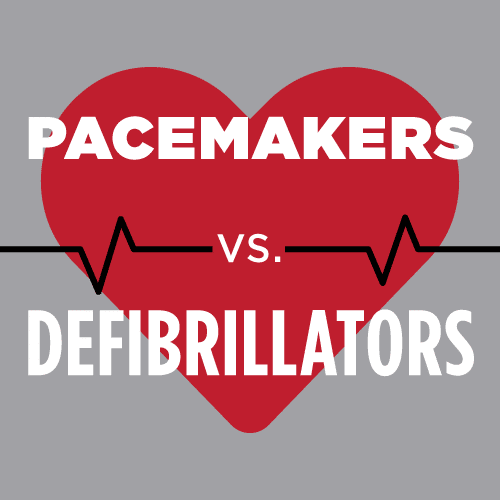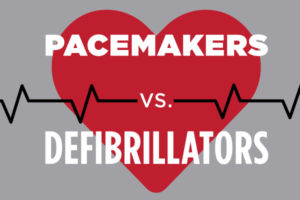 Has your doctor recommended one of these? Here’s a breakdown of how they differ.
Has your doctor recommended one of these? Here’s a breakdown of how they differ.
IF YOU’VE BEEN diagnosed with a life-threatening arrhythmia, your cardiologist may recommend an implantable device such as a pacemaker or implantable cardioverter defibrillator (ICD).
What’s the difference?
Both treat arrhythmia. A pacemaker uses electric pulses to keep your heart’s rhythm normal. An ICD monitors your heart rhythm and delivers a corrective shock when the rhythm gets too fast or too slow. Some new ICDs even have a pacemaker setting and can do both.
How big are they and where do they go?
Pacemakers are commonly the size of a half-dollar, while ICDs are comparable to a pocket watch. Both can be implanted in your chest or abdomen.
What conditions are they used for?
Both devices can help if you have:
- bradycardia
- Brugada syndrome
- heart attack
- long QT syndrome
- sudden cardiac arrest
- underlying causes of sudden cardiac arrest
- ventricular tachycardia
Will these devices require lifestyle changes?
With either device, you’ll need to follow your doctor’s instructions. You may also need to keep a few extra precautions in mind:
- Alert airport security that you have a pacemaker before going through security detectors.
- Avoid heat therapy for muscles and transcutaneous electric nerve stimulation (TENS) units.
- Don’t keep your cell phone in your shirt pocket.
- Don’t undergo magnetic resonance imaging (MRI).
- Keep headphones at least 1.2 inches away from your device.
Learn more about the heart health services available to residents of Show Low, Snowflake, Pinetop-Lakeside, and the surrounding areas. Or give us a call at 928.537.6303.


